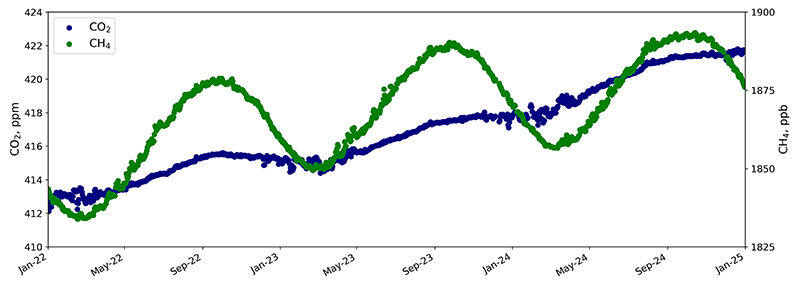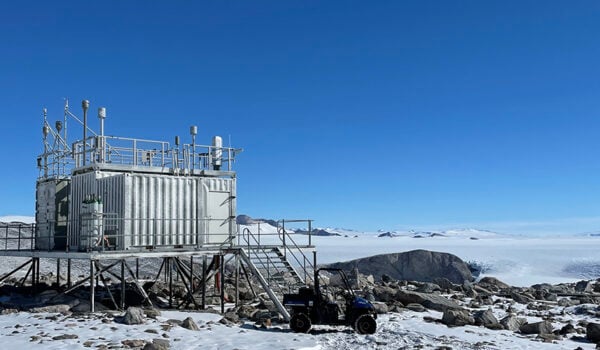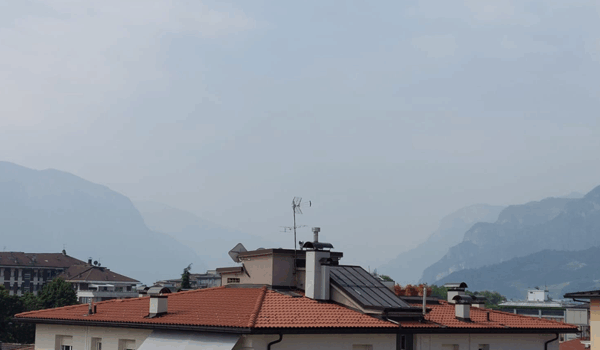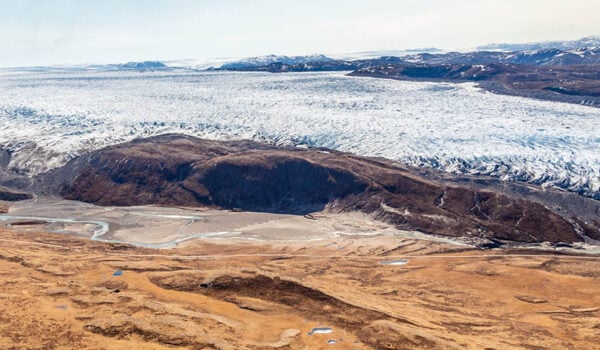On June 2, 2025, the Norwegian Trollhaugen Observatory in Antarctica became the 33rd Global Atmospheric Watch station, and the fourth in Antarctica.
The Trollhaugen Observatory is located on the mountain Trollhaugen near the Norwegian research station Troll in Queen Maud Land, Antarctica. Here, NILU measures the ozone layer, greenhouse gases, particles and other substances in the atmosphere, with support from personnel from the Norwegian Polar Institute.
Looking forward to more use of Norwegian Antarctic data
Global Atmospheric Watch (GAW) is a worldwide network of monitoring stations that are mainly used to monitor the atmosphere.
“We are very proud that Trollhaugen has now been approved as a global GAW station. GAW is the world’s most recognized network for climate data, and most scientists working on global climate calculations use data from their database. We already share data from Trollhaugen in other databases, but now it will be easier to find them. Ergo, we expect to see Antarctic data from Trollhaugen in many more research reports and other studies in the coming years,” says senior researcher Wenche Aas. She is the project manager for the monitoring program at Trollhaugen.
The Trollhaugen Observatory is also part of the Troll Observing Network (TONe). It is a multidisciplinary distributed observation network and infrastructure project of great strategic importance for the Norwegian presence and research activity in Antarctica.
Aas can report that the greenhouse gas measurements at Trollhaugen were upgraded through this national infrastructure project. The figure below shows carbon dioxide (CO2) and methane (CH4) at Trollhaugen over the past couple of years, which are now being reported to GAW.

Aas further explains that Trollhaugen has become both a GAW and an ACTRIS station in 2025.
“Perhaps the most important thing about becoming part of these networks is that the observatory is also included in their quality assurance regimes. This ensures comparable monitoring across national borders, regardless of who performs them. We already have very good systems for quality assurance at NILU, but being part of the GAW and ACTRIS systems provides additional security and, not least, recognition,” explains Aas.
Taking the human out of the equation
There is a lot of exciting research going on in Antarctica. In addition to the Norwegian Trollhaugen Observatory, Germany, the UK and the US have their own research and observation facilities.
“For natural reasons, much more research is being conducted in the Arctic and on Arctic conditions. Most people live in the northern hemisphere, and therefore most of the pollution sources are also there,” says Aas.
At the same time, it is important to monitor developments in and over Antarctica. It is a very vulnerable area, which unfortunately is no longer as untouched as we might imagine. Increased tourism in recent years is contributing to more local pollution of both the ocean and the atmosphere – as is increased research activity. Furthermore, researchers also see a major impact in Antarctica because of climate change.
“Research activity unfortunately also causes pollution. At the same time, high-quality climate data from Antarctica are enormously important – they give us scientists a more complete picture of the situation for the entire globe. Also, only monitoring data from Antarctica can currently tell us anything about what the atmosphere and air look like when you take humans out of the equation. If you are going to study pre-industrial climate, Antarctica is the closest we can get,” explains Aas.





